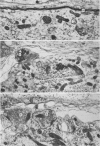Abstract
1. Extracellular responses from post-ganglionic axons of pigeon and chick isolated ciliary ganglia were elicited by stimulation of the presynaptic nerve. Intracellular recordings were also obtained from newly hatched pigeon and chick ganglion cells. The fine structure of ganglia from pigeons of various ages was examined with the electron microscope.
2. In ganglia from chick embryos and pigeons up to 10 days old, the extracellular response was unimodal with a long latency and could be blocked by the addition of D-tubocurarine (D-TC) or hexamethonium to the bathing solution. A bimodal extracellular response appeared in pigeons about 10 days after hatching. Only the second peak of the response could be blocked by D-TC or hexamethonium. The response recorded from 22 to 26-day-old pigeons was similar to that seen in the adult.
3. The intracellular recordings from ganglion cells of 2-week-old pigeons exhibit two post-synaptic potentials elicited by presynaptic stimulation. The first post-synaptic potential appears to be due to current flow through the ganglion cell during the presynaptic action potential. The second is chemically mediated. In pigeons from 1 to 6 days old, only the second post-synaptic potential is observed.
4. The presynaptic terminals in the 4-day-old birds were in the form of calyces. In pigeons 7 days old or older, boutons appeared. The boutons were presumably formed as a result of cleavage of calyciform nerve terminals. Myelin was seen first in the 7-day-old pigeon, was well developed in the 16-day-old bird, and persisted in the adults.
5. In adult ganglia, the first component of the extracellular response decreased and was finally abolished after 10-12 hr of superfusion with Tyrode solution. The second component of the response increased concomitantly. The only anatomical change noted in the ganglia after soaking was the disruption and separation of the myelin lamellae from each other and from around the ganglion and presynaptic terminals.
6. It is concluded that the myelin is necessary for electrical transmission in the pigeon ciliary ganglion.
Full text
PDF
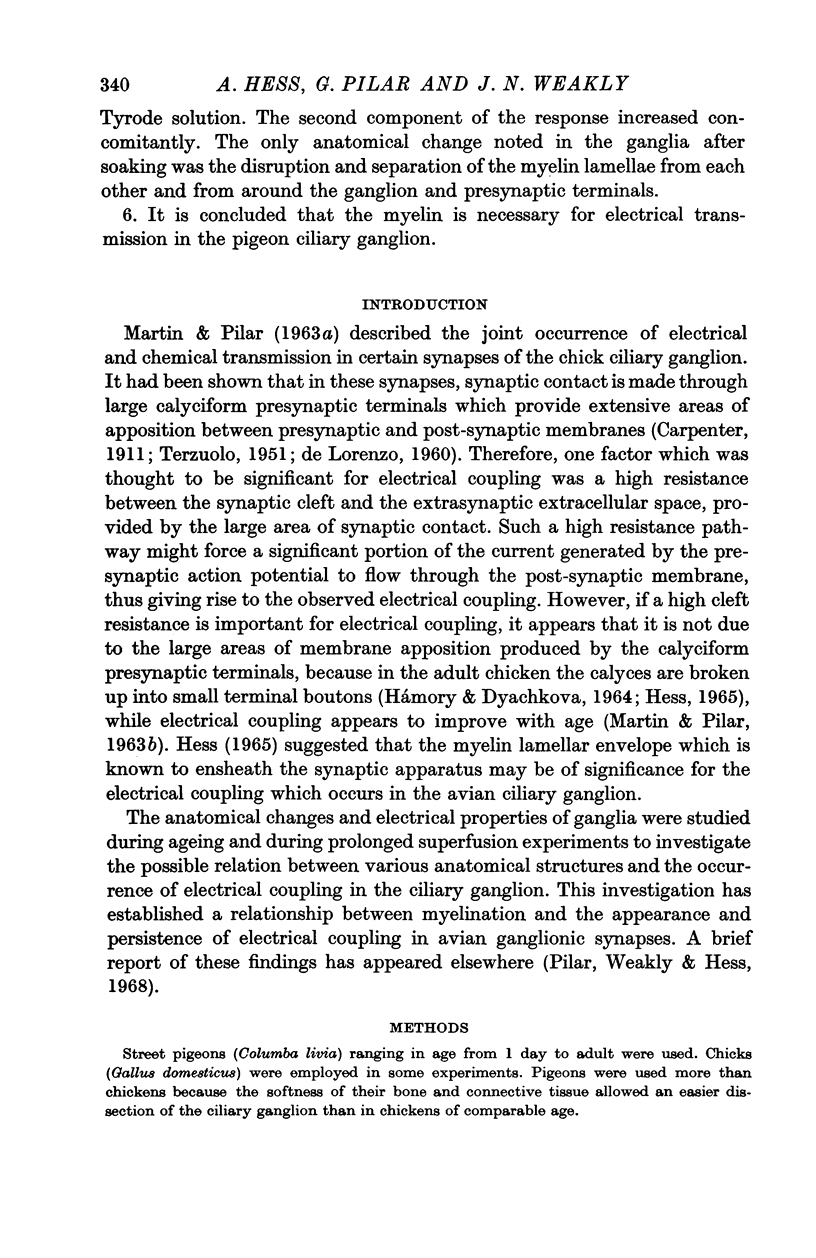
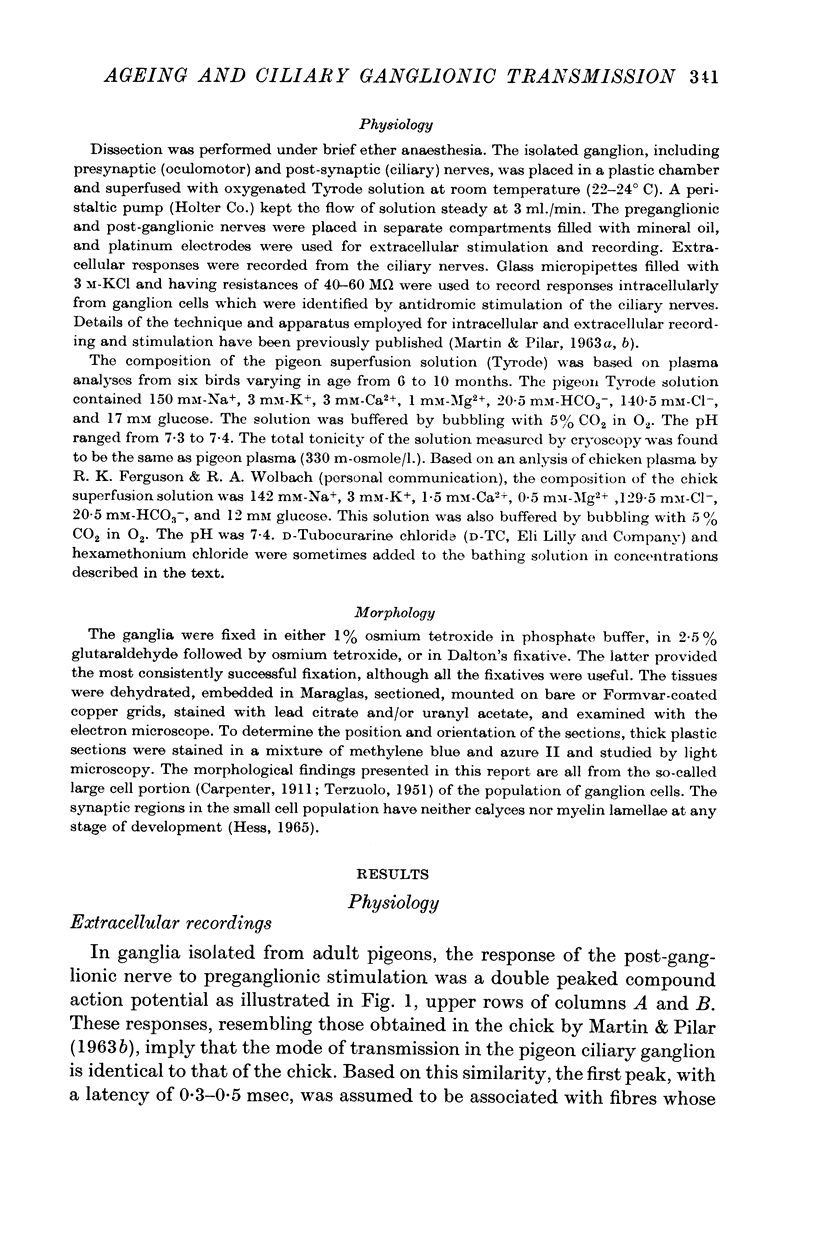
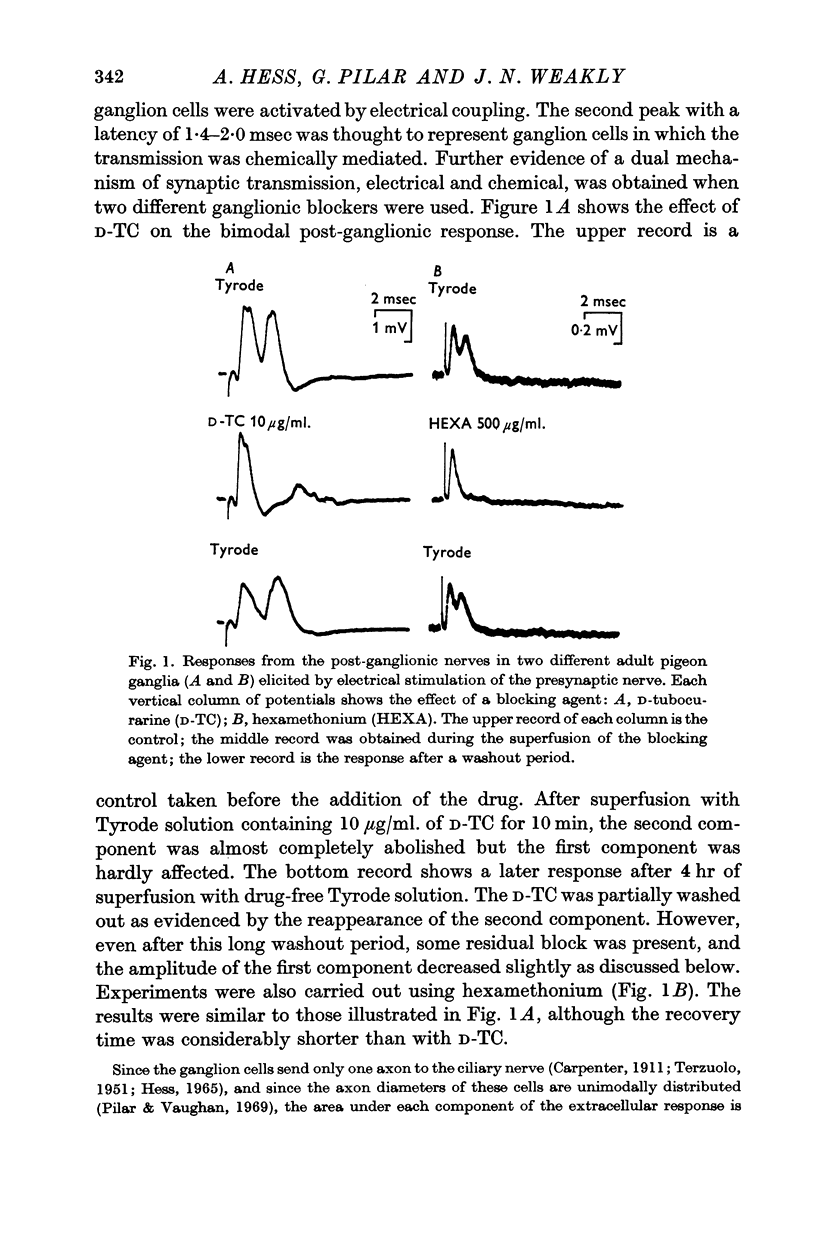
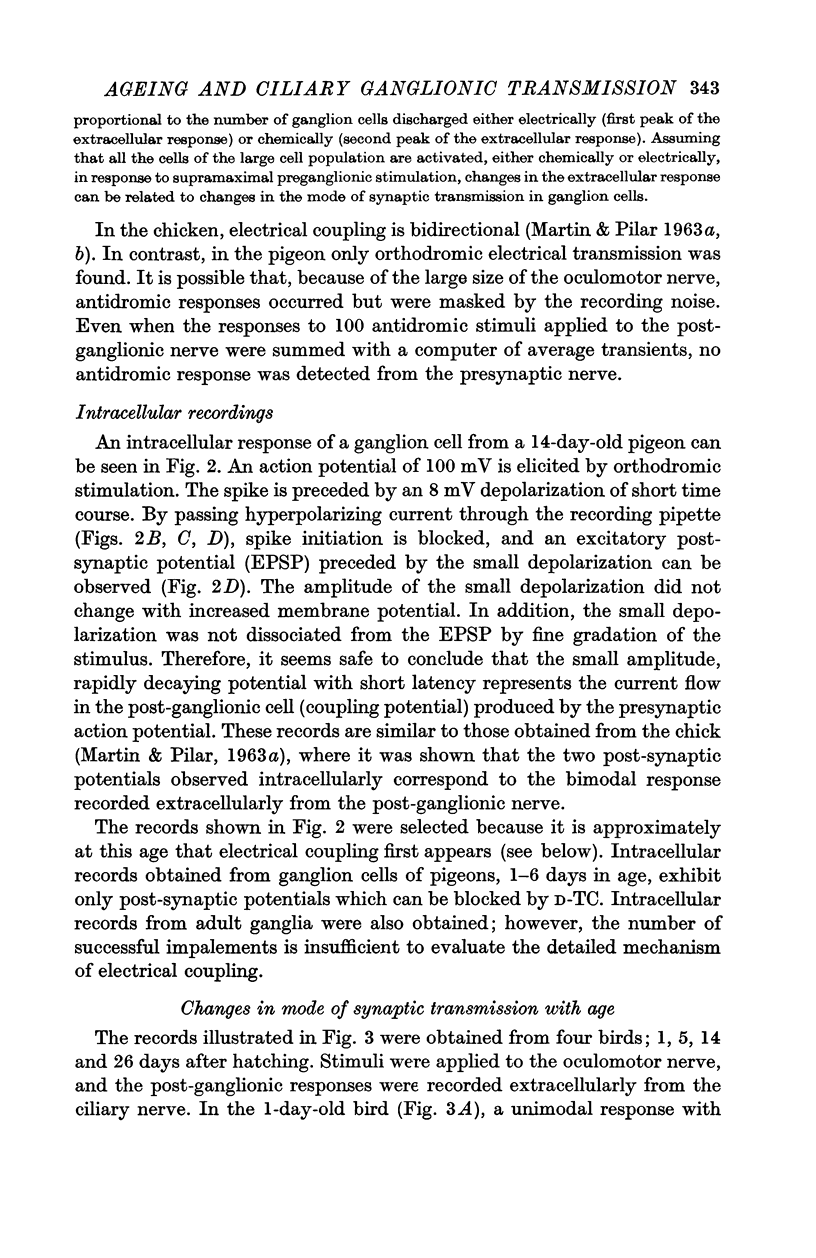

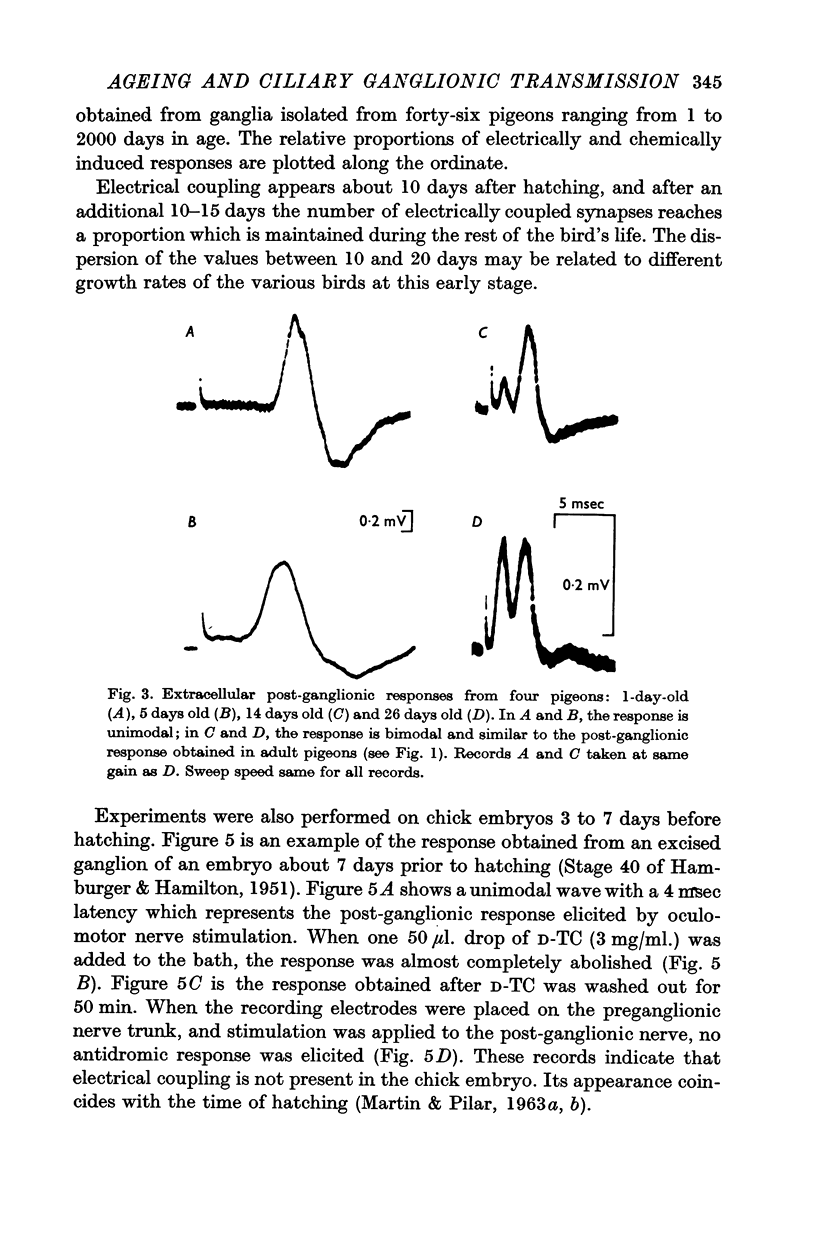
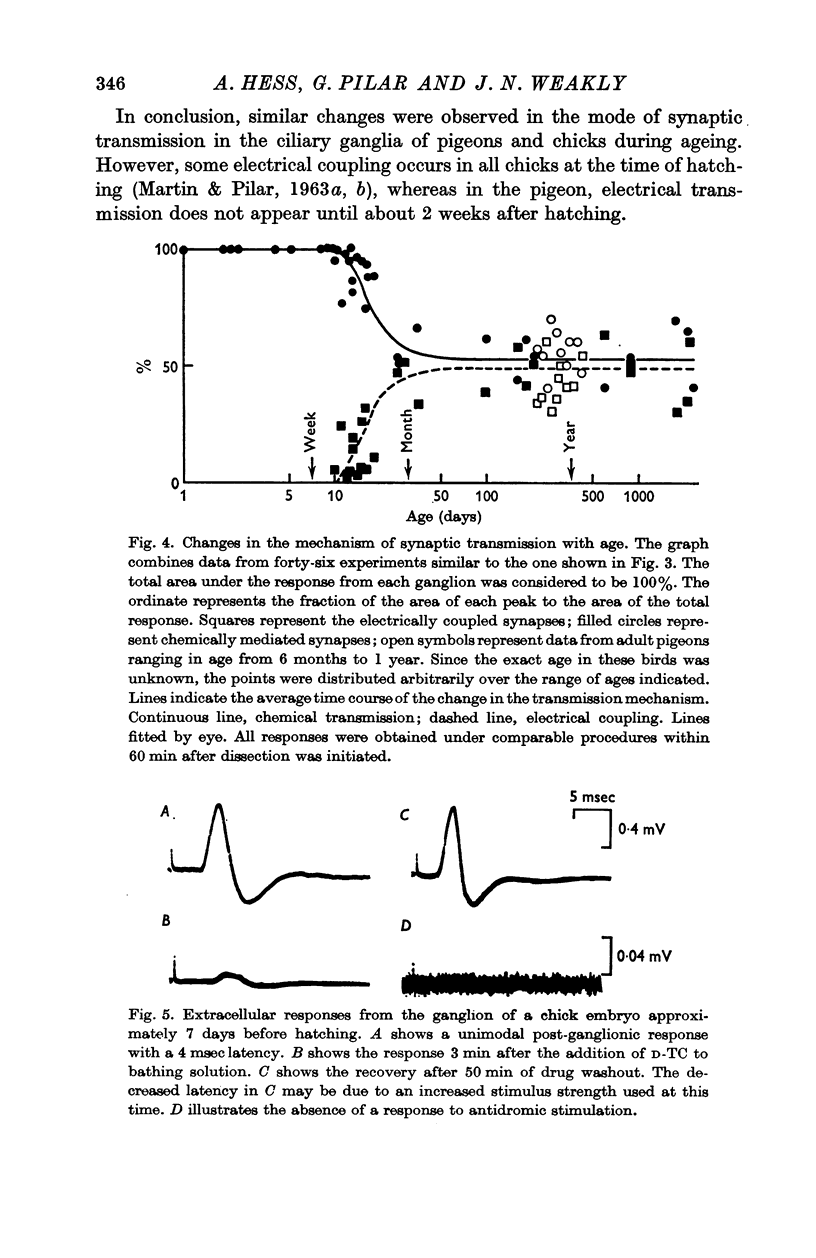
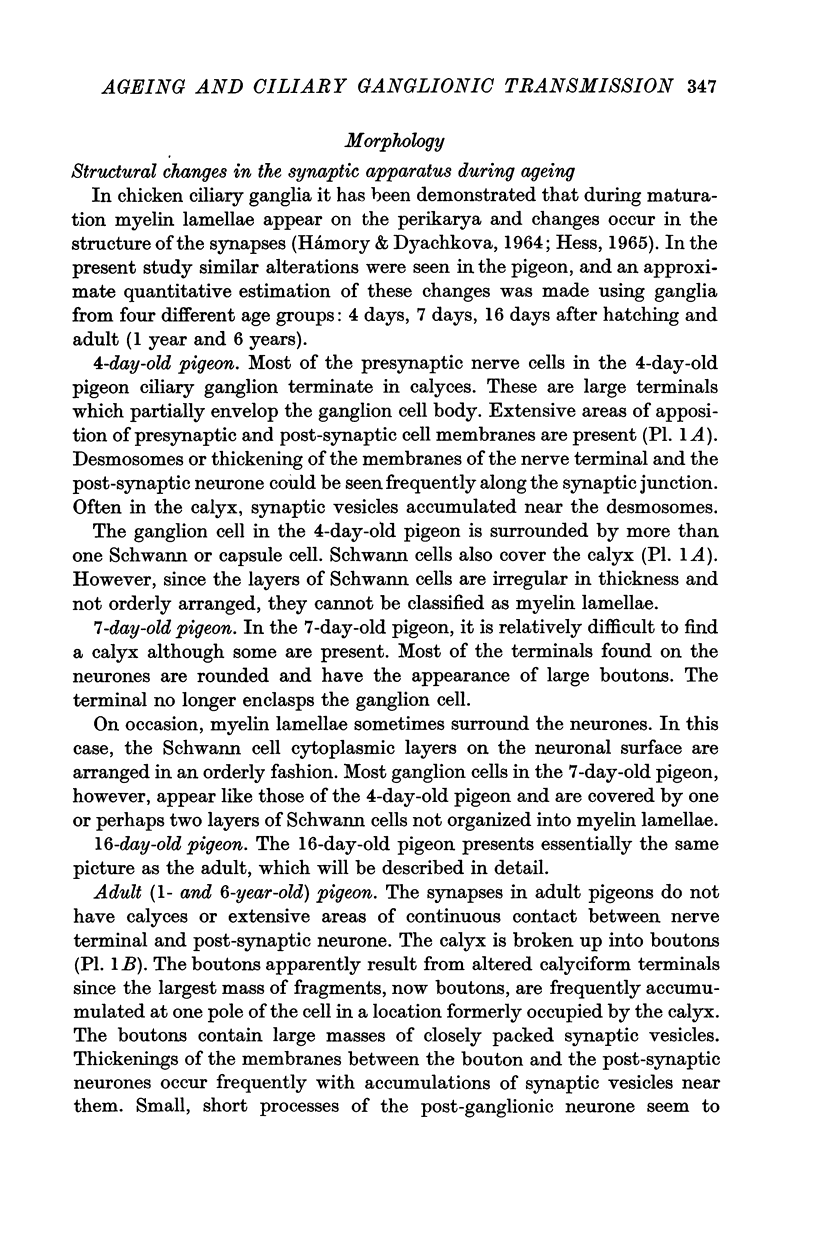
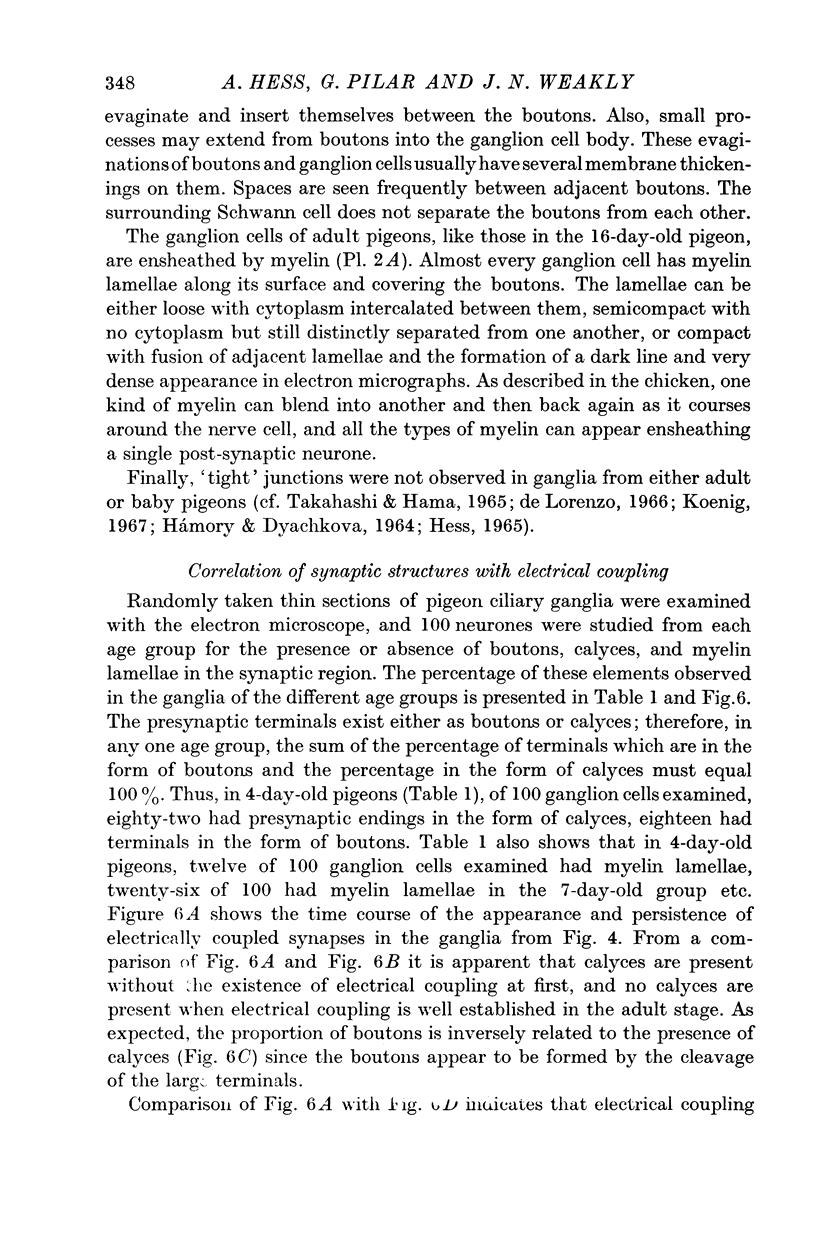
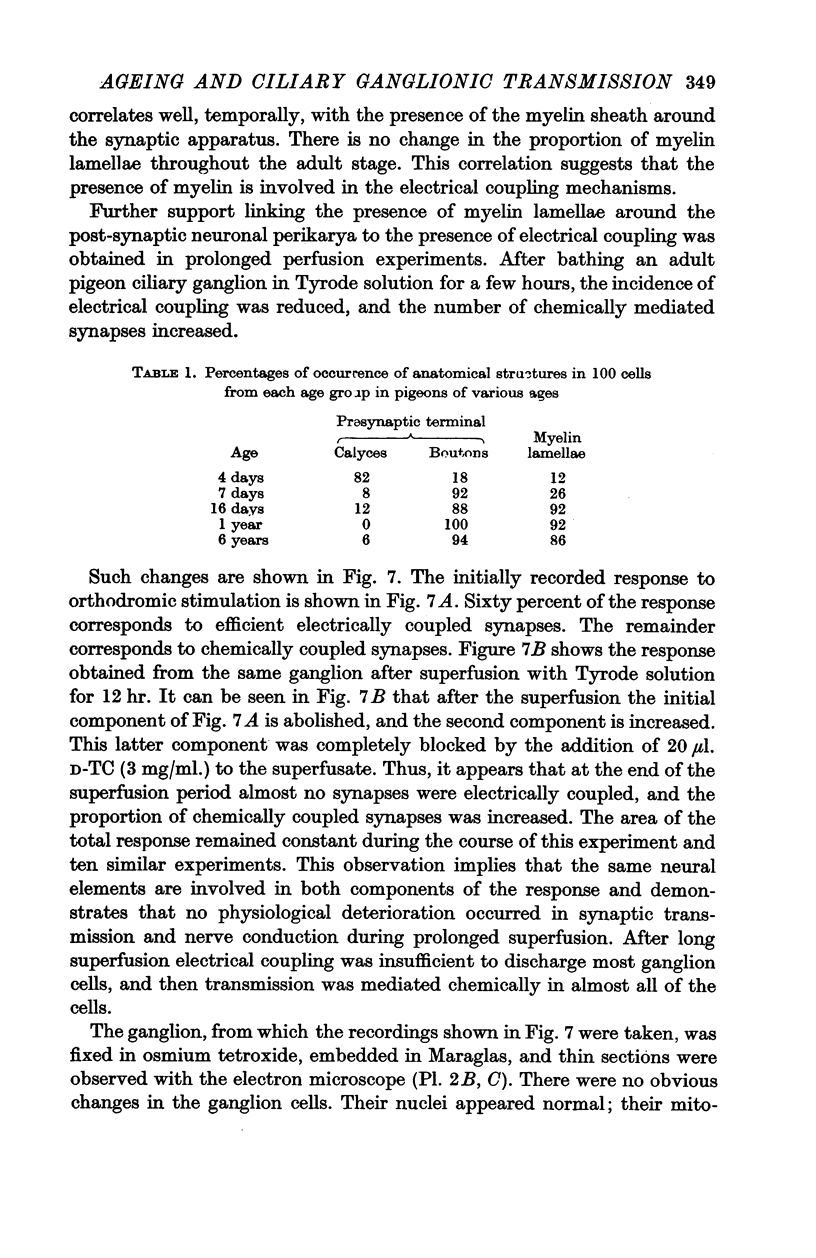
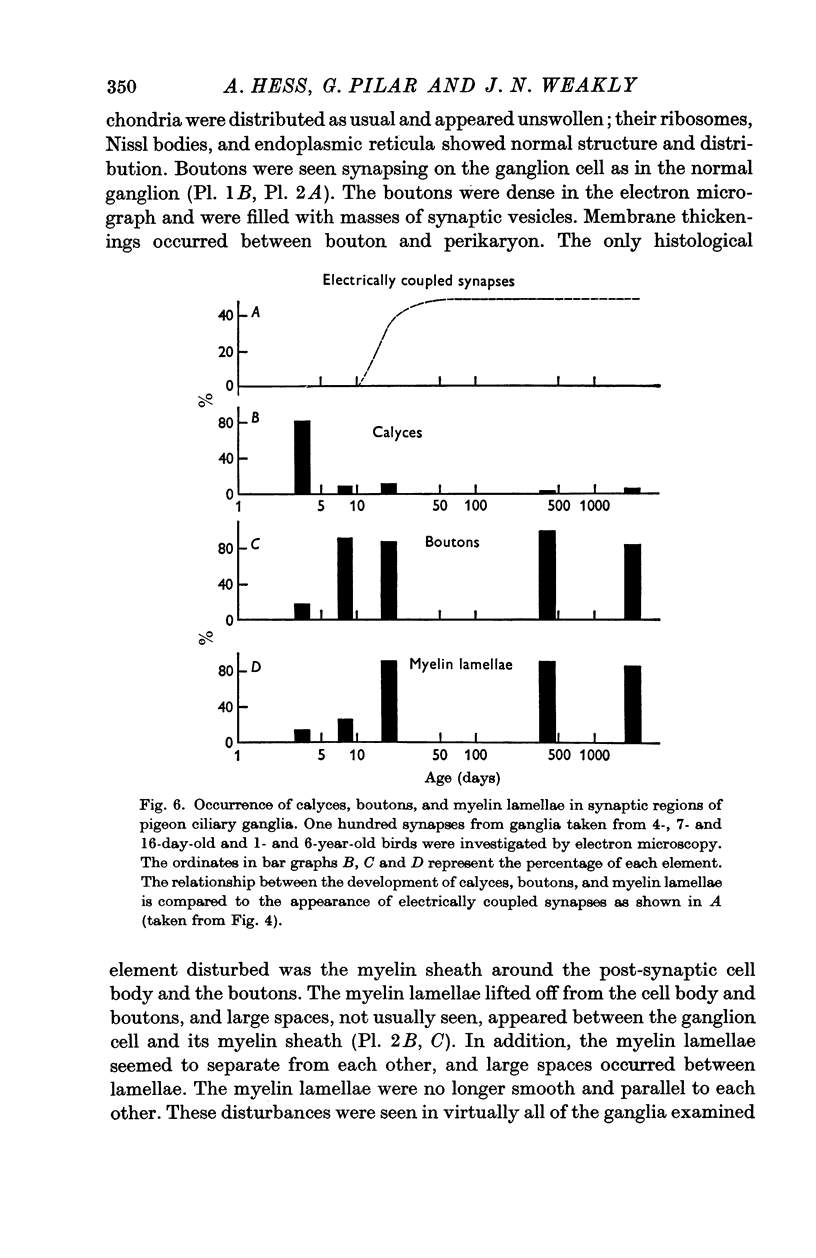

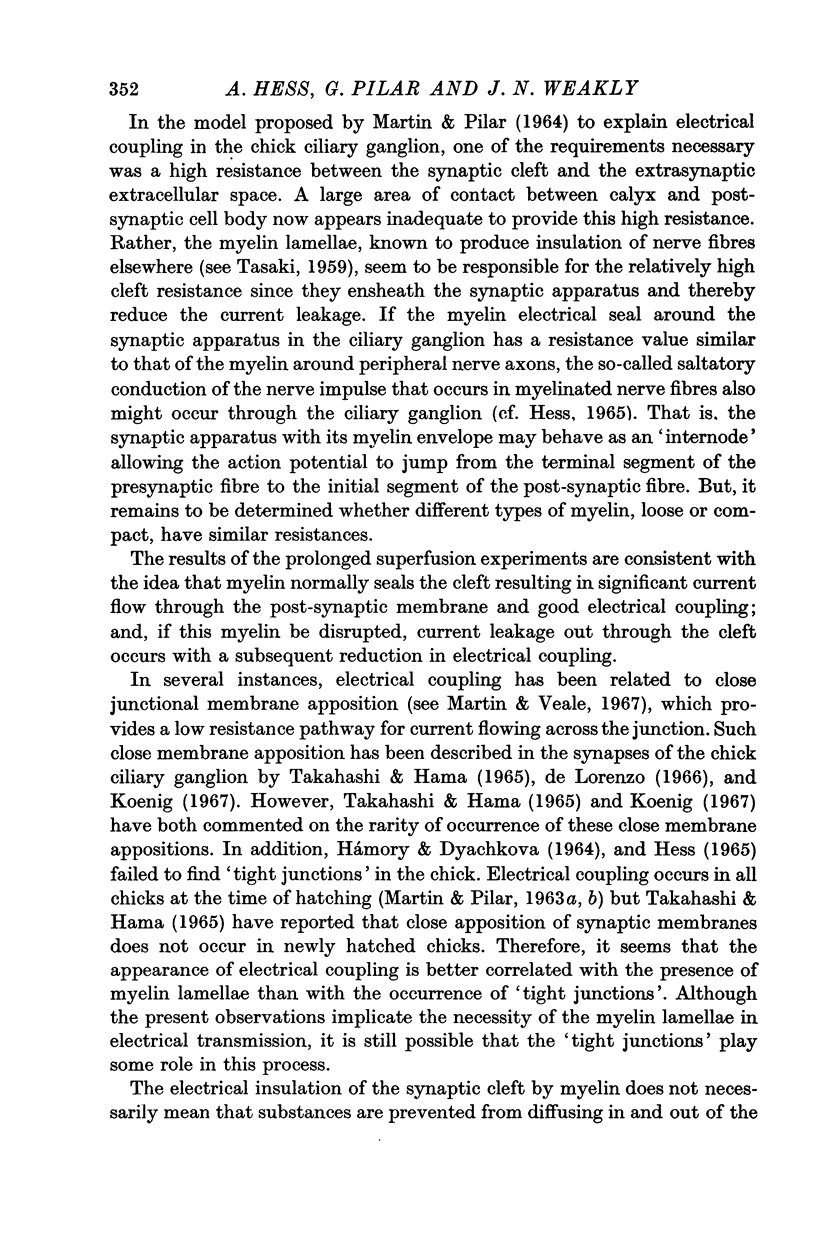
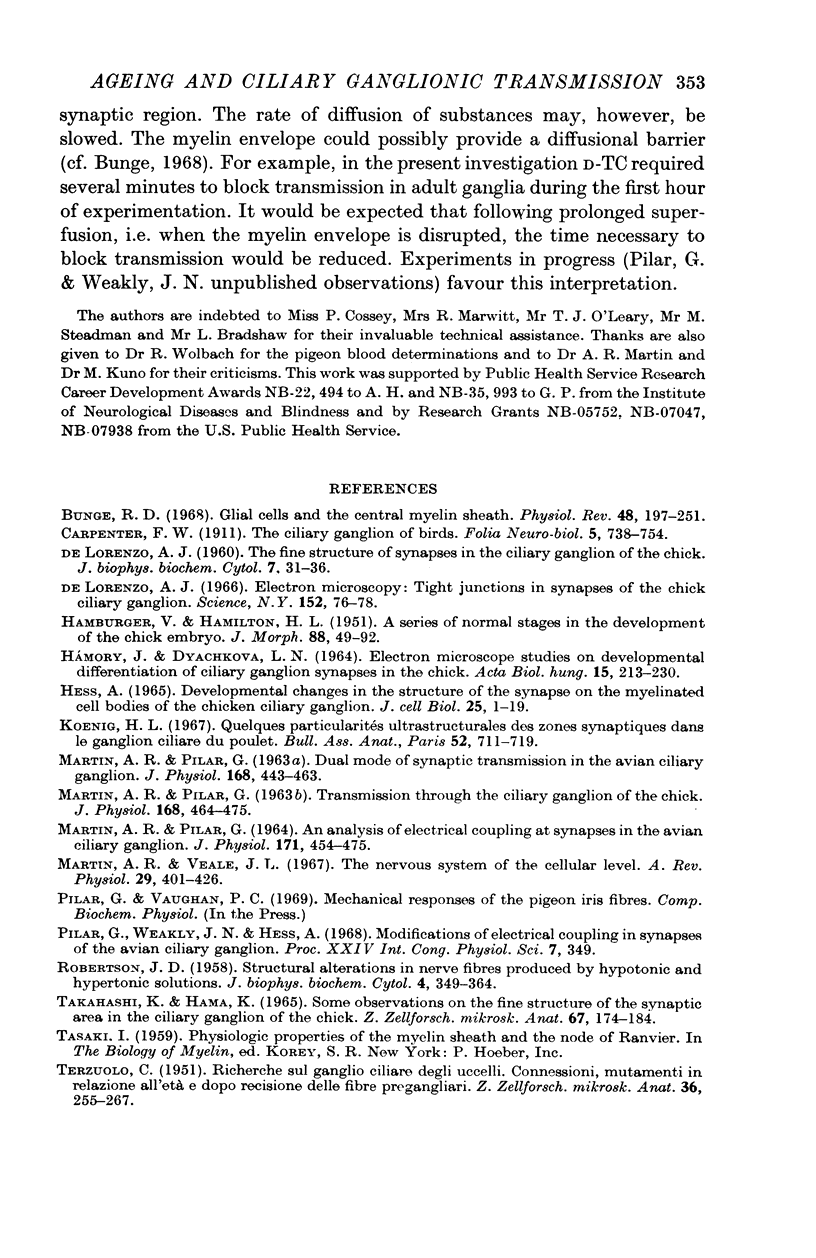
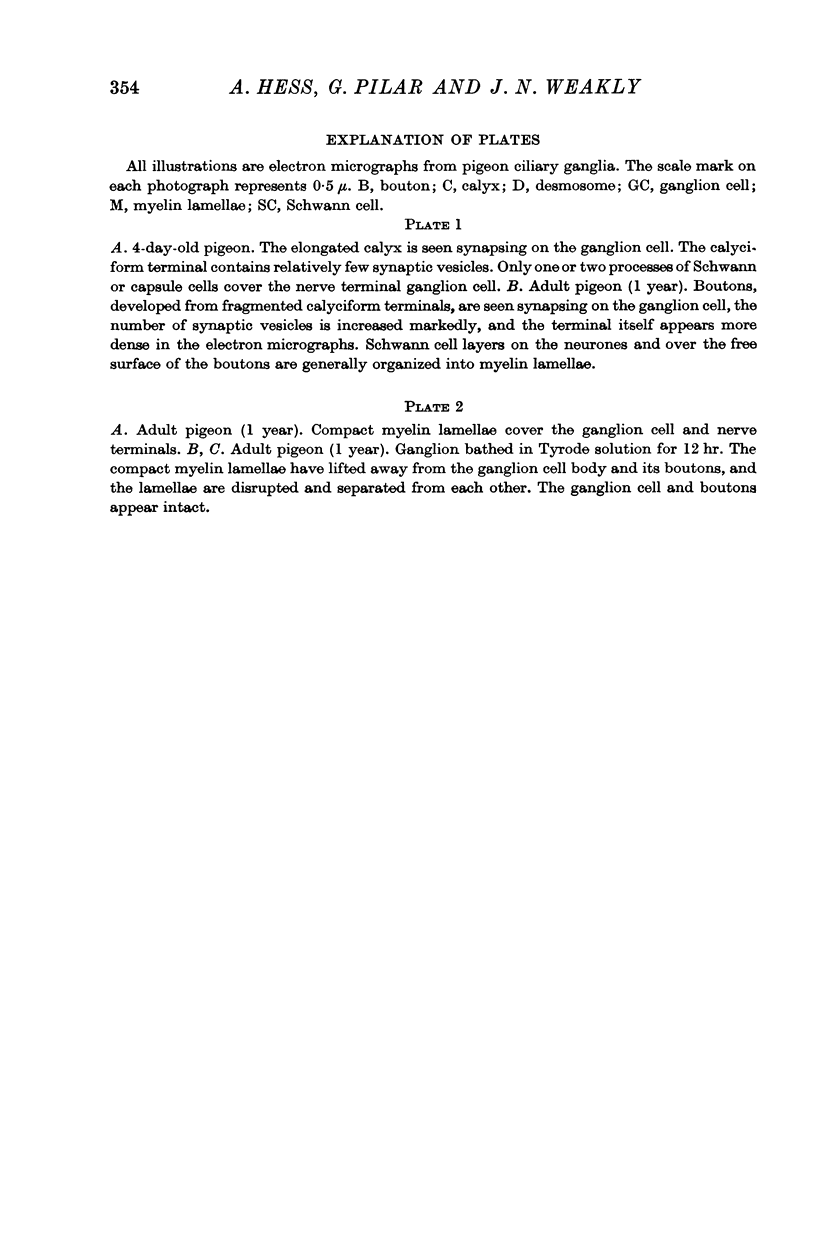

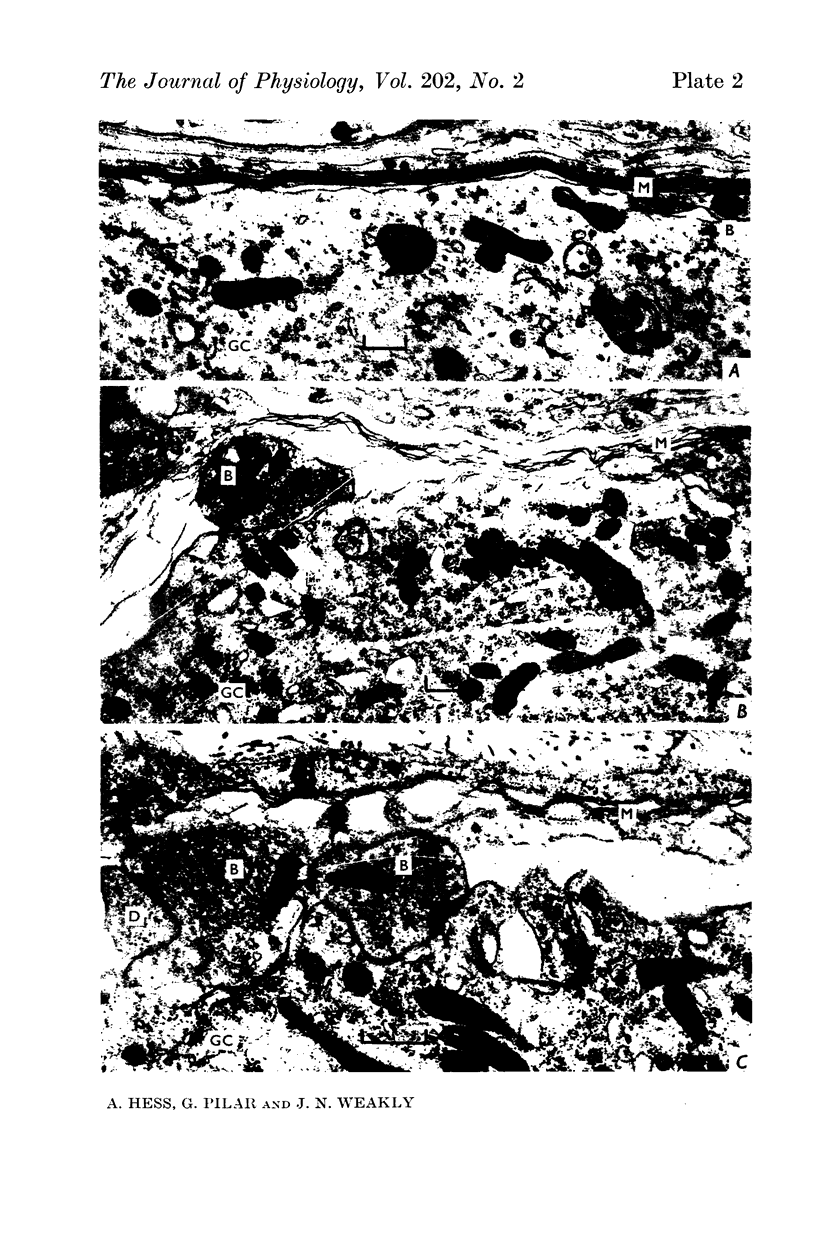
Images in this article
Selected References
These references are in PubMed. This may not be the complete list of references from this article.
- Bunge R. P. Glial cells and the central myelin sheath. Physiol Rev. 1968 Jan;48(1):197–251. doi: 10.1152/physrev.1968.48.1.197. [DOI] [PubMed] [Google Scholar]
- DE LORENZO A. J. The fine structure of synapses in the ciliary ganglion of the chick. J Biophys Biochem Cytol. 1960 Feb;7:31–36. doi: 10.1083/jcb.7.1.31. [DOI] [PMC free article] [PubMed] [Google Scholar]
- De Lorenzo A. J. Electron microscopy: tight junctions in synapses of the chick ciliary ganglion. Science. 1966 Apr 1;152(3718):76–78. doi: 10.1126/science.152.3718.76. [DOI] [PubMed] [Google Scholar]
- HAMORI J., DYACHKOVA L. N. ELECTRON MICROSCOPE STUDIES ON DEVELOPMENTAL DIFFERENTIATION ON CILIARY GANGLION SYNAPSES IN THE CHICK. Acta Biol Acad Sci Hung. 1964;15:213–230. [PubMed] [Google Scholar]
- Hess A. Developmental changes in the structure of the synapse on the myelinated cell bodies of the chicken ciliary ganglion. J Cell Biol. 1965 Jun;25(3 Suppl):1–19. doi: 10.1083/jcb.25.3.1. [DOI] [PMC free article] [PubMed] [Google Scholar]
- MARTIN A. R., PILAR G. AN ANALYSIS OF ELECTRICAL COUPLING AT SYNAPSES IN THE AVIAN CILIARY GANGLION. J Physiol. 1964 Jun;171:454–475. doi: 10.1113/jphysiol.1964.sp007390. [DOI] [PMC free article] [PubMed] [Google Scholar]
- MARTIN A. R., PILAR G. DUAL MODE OF SYNAPTIC TRANSMISSION IN THE AVIAN CILIARY GANGLION. J Physiol. 1963 Sep;168:443–463. doi: 10.1113/jphysiol.1963.sp007202. [DOI] [PMC free article] [PubMed] [Google Scholar]
- MARTIN A. R., PILAR G. TRANSMISSION THROUGH THE CILIARY GANGLION OF THE CHICK. J Physiol. 1963 Sep;168:464–475. doi: 10.1113/jphysiol.1963.sp007203. [DOI] [PMC free article] [PubMed] [Google Scholar]
- Martin A. R., Veale J. L. The nervous system at the cellular level. Annu Rev Physiol. 1967;29:401–426. doi: 10.1146/annurev.ph.29.030167.002153. [DOI] [PubMed] [Google Scholar]
- ROBERTSON J. D. Structural alterations in nerve fibers produced by hypotonic and hypertonic solutions. J Biophys Biochem Cytol. 1958 Jul 25;4(4):349–364. doi: 10.1083/jcb.4.4.349. [DOI] [PMC free article] [PubMed] [Google Scholar]
- TERZUOLO C. Ricerche sul ganglio ciliare degli uccelli; connessioni, mutamenti in-relazione all'eta e dopo recisione delle fibre pregangliari. Z Zellforsch Mikrosk Anat. 1951;36(3):255–267. [PubMed] [Google Scholar]
- Takahashi K., Hama K. Some observations on the fine structure of the synaptic area in the ciliary ganglion of the chick. Z Zellforsch Mikrosk Anat. 1965 Jul 15;67(2):174–184. doi: 10.1007/BF00344467. [DOI] [PubMed] [Google Scholar]




